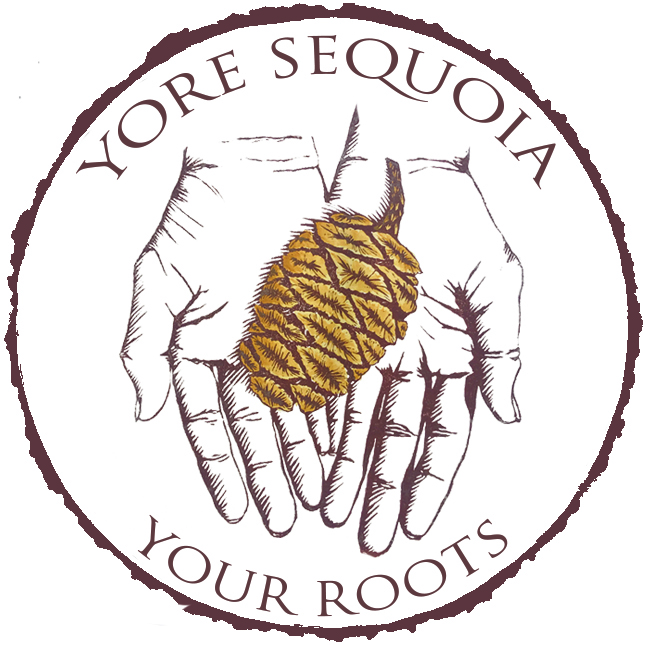A large mining artifact on display at the Three Rivers Museum helps tell the story of a time when miners flocked to the area with dreams of silver.
By Sarah Elliott and Laile Di Silvestro, 15 June 2018, The Kaweah Commonwealth; editorial update 2 April 2021
CAPTION (FIRST PHOTO): Taking part in the transfer of an iron tank associated with the Mineral King mining days from a Three Rivers ranch to the Historical Museum were Sequoia-Kings Canyon staff (from left to right) Ward Eldredge, museum curator; Gioia Spatafora, museum technician; Jimson Vincent; Jim Barton (donor); Anthony Hilson; Mike Varela; and Pat Lasswell.
CAPTION (SECOND PHOTO): In May, a Sequoia and Kings Canyon National Parks crew of six delivered the historic water-jacket furnace from the Mineral King mining heyday to its new home at the Three Rivers Historical Museum. Those ensuring this phase of the project when smoothly were park staff Ned Aldrich, Mike Judd, Lynn Harrington, Todd Newton, Tim Riddle, and Phil Woods.
Mineral King’s silver rush took place from 1873 to 1881. Although traces of nearly every mineral found in the Sierra Nevada are present at Mineral King, prospective miners flocked to the area with dreams of silver.
In 1873, 65 claims were filed. Work began in White Chief Canyon, on Empire Mountain, and throughout the remote valley. By 1874, there were 166 mining claims. In 1875, 140 additional claims were filed.
Farmers left their farms, businessmen their businesses, stockmen their herds, and preachers their pulpits, all bound for the land of silver (Times-Delta, April 1912).
Urgently needed for the success of the Mineral King Mining District was a wagon road because once the area had a good road, a smelter and the necessary mining machinery could be transported to the valley. A smelter was of critical importance for the processing of the Mineral King ore.
In 1875, buoyed by San Francisco investors and speculators, the New England Tunnel and Smelting Company, with all the equipment necessary to process ore, began operations in Mineral King. The NETSC turned out to be not as viable as they would have liked folks to believe.
And they couldn’t keep their financial difficulties, personnel problems, or greed and deceit hidden for long. The company soon became known as the New England Thieving and Swindling Company by miners in the know.
New exhibit
Now all of Three Rivers and its visitors have the opportunity to learn all about the area’s mining boom and, specifically, the New England Tunnel and Smelting Company. The Mineral King Preservation Society, which operates the Mineral King Room at the Three Rivers Historical Museum, is has been working with several partners to develop a comprehensive exhibit of mining artifacts.
In May 2018, a portion of the New England Tunnel and Smelting Company water jacket smelter was delivered to the Historical Museum by a Park Service crew.
On Tuesday, June 5, 2018 a history-filled vessel was reunited with an important artifact of the Mineral King’s silver rush in a new outdoor exhibit at the Three Rivers Historical Museum. The solid iron tank, which is estimated to weigh more than 300 pounds, dates from the 1870s and was intended to hold molten silver produced by the smelter, a portion of which now stands in the center of the exhibit.
Together, these immense iron artifacts help tell the story of Mineral King, Sequoia National Park, and Three Rivers. They tell the story of greed, deceit, hope, and a community spirit that persists today.
The new exhibit is the result of a collaboration between the Mineral King Preservation Society, Sequoia and Kings Canyon National Parks, Three Rivers Historical Society, and Jim Barton of Three Rivers, who donated the iron tank to Sequoia National Park. The installation of the artifacts is the first step in a process that will entail restoration, preservation, and development of descriptive materials.
